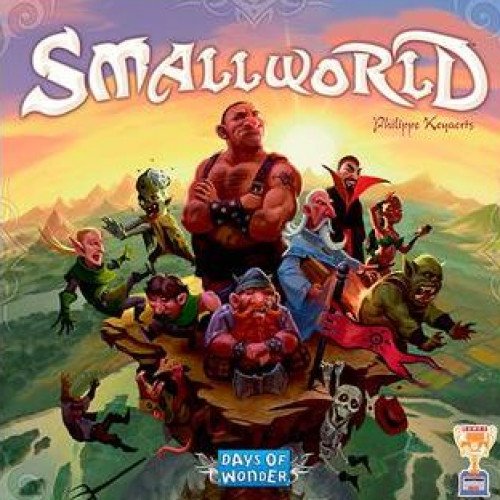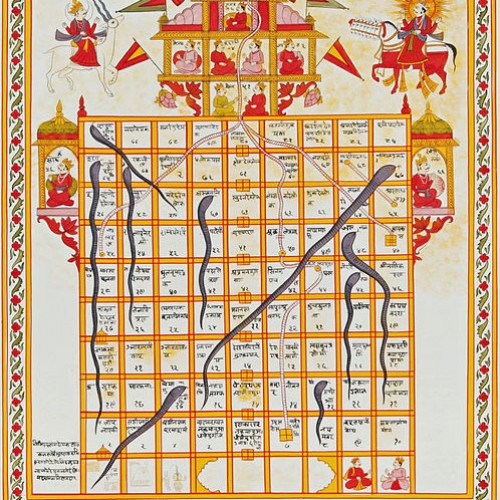"SMALL WORLD" vs "SNAKES AND LADDERS"

SMALL WORLD
Small World is a board game designed by Philippe Keyaerts, Illustrated by Miguel Coimbra and Cyrille Daujean as graphic designer, and published by Days of Wonder in 2009. The game is a reworking of Keyaerts' 1999 game Vinci. Small World has won several awards, including Games magazine 2010 Game of the Year. Each player begins the game by selecting one of several available fantasy races that are created randomly. Each race is defined by two interlocking tiles, one giving a noun describing the race (e.g., "Elves") and the other an adjective (e.g., "Flying"), describing an additional special ability or special scoring opportunity. Numbers printed on the tiles also show how many race tokens the player may draw when playing that race. The player then makes use of the race tokens to capture territory on one of four different playing maps. Map selection is determined by the number of players with a specific map used for 2, 3, 4, or 5 players. To capture a territory, a player must place a particular number of tokens in it, based on the location of the territory, the number of defending tokens, and any special abilities of the player's race. If the player can place a sufficient number of tokens, the capture is guaranteed to succeed; if they cannot, the move is illegal. If enemy tokens are defeated in a captured territory, one of them is removed from the game entirely and the remainder are returned to the owning player to redeploy in their other territories. At the end of each turn, a player scores points based on the number of territories they own, with some racial abilities providing bonuses. Most territory captures are dieless; however, a player who is left at the end of their turn holding a number of tokens insufficient to capture a particular territory may attempt to capture it using a special die called the reinforcement die. After playing all the tokens into the target territory, they roll this customized, six-sided reinforcement die which increases the strength of their capture by the number rolled (0–3 units). If this total is still insufficient to capture the territory, the tokens are returned to the player's other currently owned territories and the player's turn ends; they cannot be redeployed to capture another territory, even if they would have been sufficient to do so. Since the number of tokens in a race is (usually) fixed, and can only go down as other races capture territories, eventually a race will reach a maximum number of territories that it can support. When this occurs, the player owning that race can declare that it is going into decline. This allows the player to select a new race to bring onto the board while the tokens of the former race remain in place, no longer movable, but continuing to gather points until their territories are captured. The game continues until a certain number of turns are completed, whereupon the player with the highest score wins.
Statistics for this Xoptio

SNAKES AND LADDERS
Snakes and ladders, known originally as Moksha Patam, is an ancient Indian board game for two or more players regarded today as a worldwide classic. It is played on a game board with numbered, gridded squares. A number of "ladders" and "snakes" are pictured on the board, each connecting two specific board squares. The object of the game is to navigate one's game piece, according to die rolls, from the start (bottom square) to the finish (top square), helped by climbing ladders but hindered by falling down snakes. The game is a simple race based on sheer luck, and it is popular with young children. The historic version had its roots in morality lessons, on which a player's progression up the board represented a life journey complicated by virtues (ladders) and vices (snakes). The game is also sold under other names such as Chutes and Ladders, Bible Ups and Downs, etc., some with a morality motif; a morality Chutes and Ladders was published by the Milton Bradley Company starting from 1943. The size of the grid varies, but is most commonly 8×8, 10×10 or 12×12 squares. Boards have snakes and ladders starting and ending on different squares; both factors affect the duration of play. Each player is represented by a distinct game piece token. A single die is rolled to determine random movement of a player's token in the traditional form of play; two dice may be used for a shorter game.